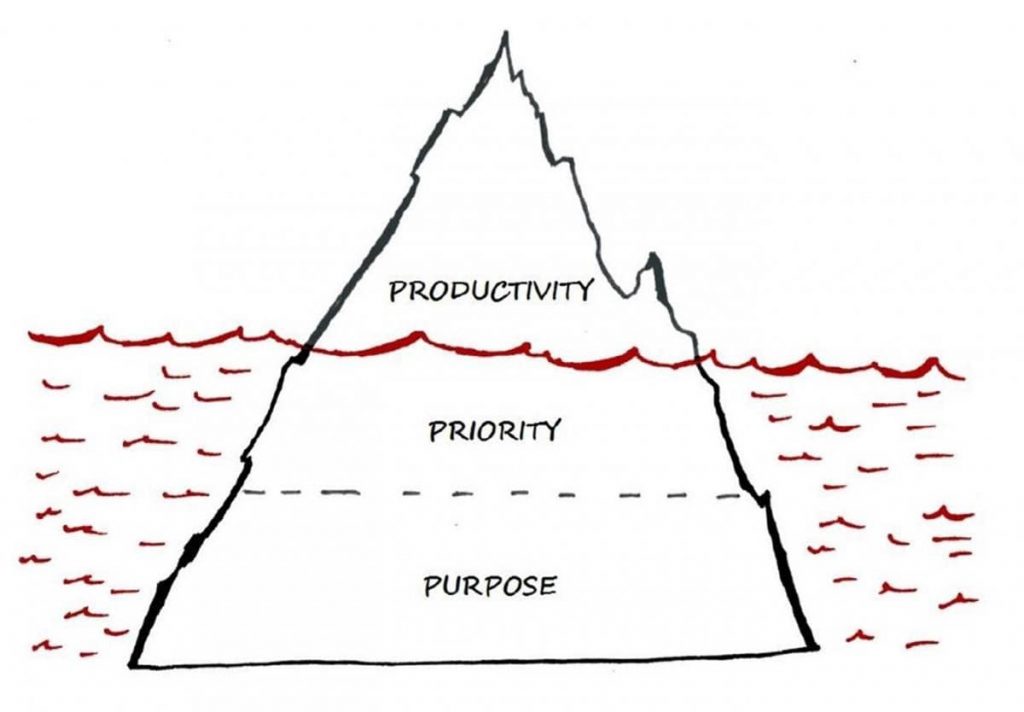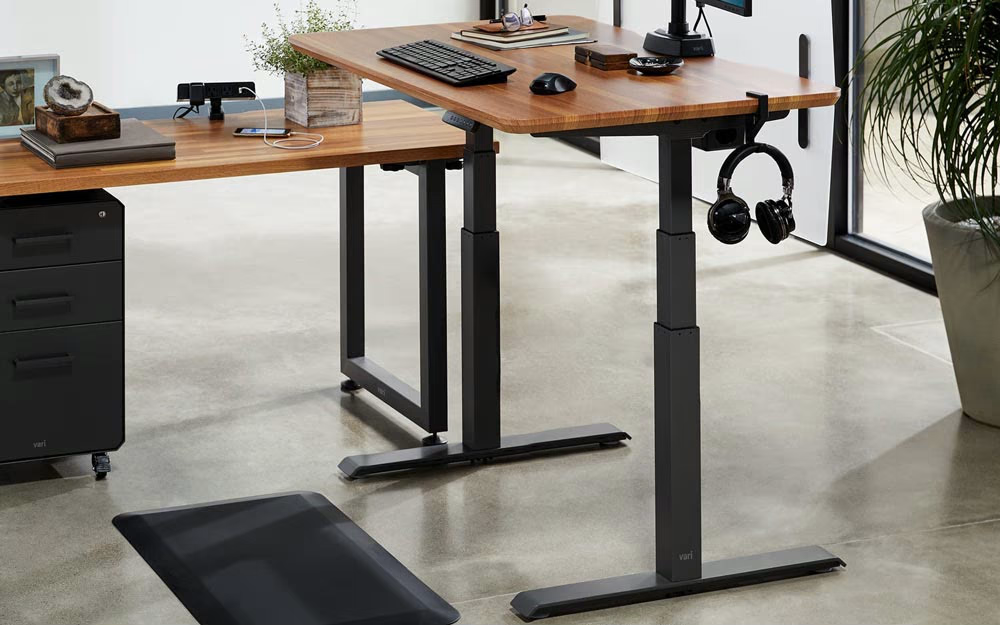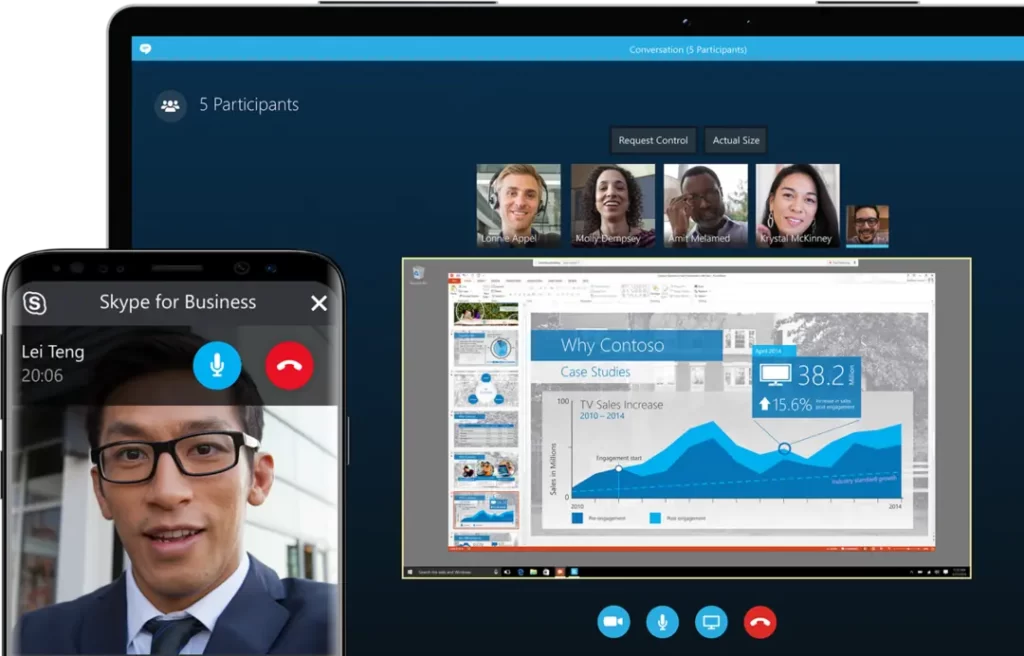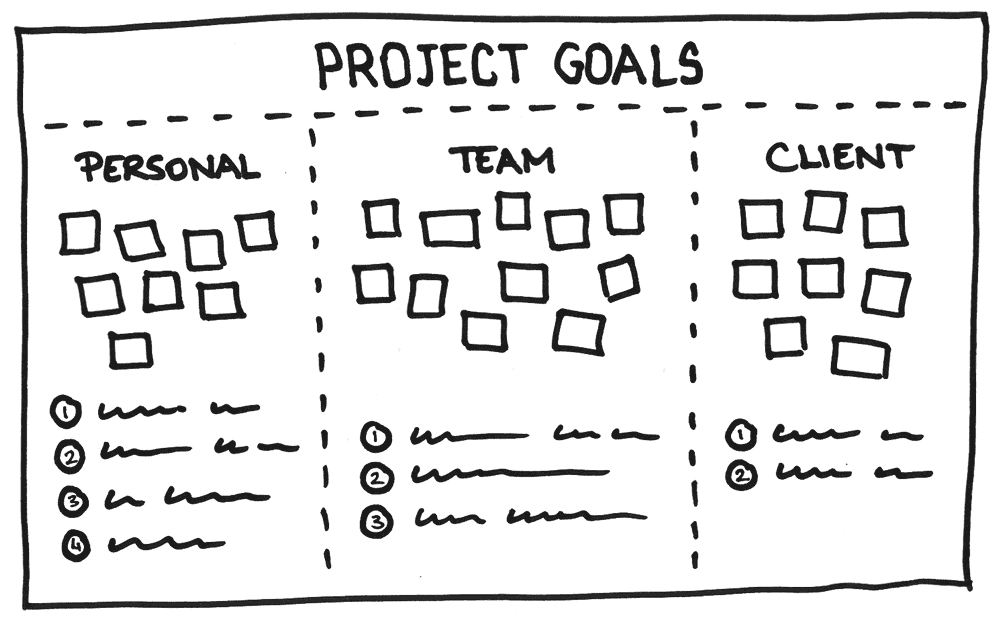How to Work Remotely: Tips & Strategies
You've probably read many articles that paint a picture of remote working as a heavenly utopia, filled with unhurried mornings, picturesque coffee shops, and the freedom to explore the world at your leisure. It's true – remote work can offer an incredible lifestyle. According to a 2022 survey, 59% of remote workers wouldn't return to traditional office-based roles given a choice, citing flexibility as a critical factor.
But let's cut to the chase. While remote working has its perks, it also comes with unique challenges – think isolation, time management hurdles, distractions, and work-life boundaries. Sound familiar? Don't worry; you're not alone. A recent study from Microsoft found that more than 50% of remote workers reported struggling with these issues.
The good news? You can survive and thrive in remote working by mastering critical strategies and cultivating the right mindset. So, grab your caffeinated beverage and buckle up because we're about to help you navigate the digital highways and byways of remote work. Let's go!
Table of Contents
1: Understanding the Benefits of Remote Work
In this section, we'll explore the numerous advantages of remote work and how it can positively impact your professional and personal life.
1.1 Enhanced Work-Life Balance

Remote work offers numerous advantages, including achieving a superior work-life balance. In contrast to traditional office-based jobs, remote work liberates individuals from the constraints of a fixed location, enabling them to effectively manage their personal and professional lives in a way that aligns with their priorities.
One of the most significant benefits of remote work is spending more quality time with loved ones. Whether having breakfast with family, attending school events for children, or simply being present during crucial moments, remote work allows individuals to be actively involved in their family's daily lives. By eliminating the need for long commutes and rigid office hours, remote workers have the flexibility to allocate their time and attention where it matters most, fostering stronger connections and nurturing meaningful relationships.
Moreover, remote work provides the freedom to pursue hobbies and personal interests without compromising professional growth. Individuals can engage in activities they are passionate about, such as playing a musical instrument, painting, writing, or participating in sports during their breaks or non-working hours. This promotes personal fulfilment and well-being, fuels creativity, and enhances cognitive abilities, leading to a more productive work life.
The flexibility of remote work also enables individuals to take care of personal commitments easily. Whether attending medical appointments, running errands, or managing household responsibilities, remote work seamlessly integrates personal and professional obligations. Remote workers can maintain a harmonious equilibrium by eliminating the need to sacrifice one's personal life for work, reducing stress and increasing overall satisfaction.
Furthermore, remote work allows individuals to create their ideal work environment. By choosing where they work, whether it's a home office, a cosy coffee shop, or a serene park, individuals can tailor their surroundings to maximise productivity and well-being. This personalisation fosters a sense of ownership and empowerment, leading to higher job satisfaction and motivation.
Additionally, remote work can positively impact physical and mental health. The elimination of long commutes reduces exposure to stressful traffic conditions. It allows individuals to use that time for self-care activities, such as exercise, meditation, or pursuing a healthy breakfast routine. The flexibility to schedule breaks throughout the day also promotes better work-life integration and prevents burnout, ultimately contributing to enhanced overall well-being.
1.2 Increased Productivity

Despite commonly held misconceptions, remote work has proven to catalyse heightened productivity. The absence of long commutes and the elimination of office distractions enable remote workers to fully immerse themselves in their tasks, fostering an environment conducive to exceptional results. Furthermore, the flexibility of remote work allows individuals to curate a personalised work environment tailored to their unique preferences, further enhancing their ability to concentrate and deliver high-quality output.
One of the primary advantages of remote work is the elimination of time-consuming commutes. Employees gain valuable hours that can be redirected towards their careers by removing the need to travel to a physical office. This time-saving aspect not only reduces stress levels but also enhances productivity. Remote workers can allocate the saved commuting time to tasks that require their undivided attention, resulting in increased efficiency and a greater capacity for accomplishing their goals.
Moreover, the absence of office distractions bolsters productivity in remote work settings. Traditional office spaces often present a myriad of interruptions, ranging from impromptu meetings and water cooler conversations to ambient noise and frequent interruptions from colleagues. In contrast, remote workers can design their work environment according to their preferences, creating a setting that maximises their concentration and minimises distractions. This level of control allows employees to focus more effectively on their assignments, leading to improved output quality and timeliness.
Remote work also fosters an atmosphere that empowers individuals to cultivate personalised work environments, enhancing their productivity. Each person has their own unique set of preferences and requirements regarding their work environment. Some may thrive in a quiet space with minimal visual distractions, while others may prefer background music or the company of their pets. Remote work allows employees to create an environment that aligns with their specific needs, resulting in heightened focus, motivation, and overall satisfaction. Individuals can achieve optimal productivity levels and deliver exceptional results by tailoring their surroundings to suit their preferences.
Furthermore, the digital tools and technologies available for remote work have undergone significant advancements, enabling seamless collaboration and efficient communication among remote teams. Virtual meetings, project management platforms, and instant messaging applications have become essential tools for remote work environments. These tools facilitate effective collaboration, ensuring remote workers can connect and coordinate with their colleagues effortlessly, irrespective of physical distance. This interconnectedness enhances team productivity by streamlining workflows and enabling real-time collaboration, leading to a collective boost in performance.
1.3 Greater Flexibility

Working remotely allows individuals to take complete control of their professional lives. By embracing remote work, you can design your schedule, curate an ideal workspace, and seamlessly integrate personal commitments into your work hours. The flexibility inherent in remote work empowers you to maximise productivity, tailor your workflow to suit your unique needs, and ultimately achieve a better work-life balance.
One of the most significant advantages of remote work is setting your schedule. You can determine when you're most productive instead of adhering to rigid 9-to-5 office hours. Whether you're a morning person who thrives in the early hours or a night owl who finds inspiration after sunset, remote work allows you to align your work hours with your natural energy rhythms. This freedom to customise your schedule leads to enhanced efficiency and increased job satisfaction as you can leverage your peak performance periods to accomplish tasks effectively.
Moreover, remote work grants you the privilege of choosing your preferred workspace. Unlike traditional office environments, which often come with distractions and limitations, remote work empowers you to create an environment that promotes focus and productivity. Whether you thrive in a quiet home office, seek inspiration in a bustling café, or desire the tranquillity of a park bench, you can tailor your surroundings to your liking. The ability to curate a workspace conducive to your needs enhances your concentration, creativity, and overall work quality.
Another advantage of remote work is its capacity to accommodate personal obligations seamlessly. The flexibility provided by working remotely allows you to effortlessly integrate family commitments, personal errands, and other responsibilities into your workday. Need to pick up your children from school? No problem. Remote work enables you to adjust your schedule and attend to important family matters without sacrificing your professional commitments. This adaptability creates a harmonious blend between work and personal life, fostering a sense of well-being and reducing stress.
By embracing the flexibility of remote work, you can optimise your productivity based on your individual needs and preferences. Remote work acknowledges that everyone has unique working styles and empowers you to tailor your workflow accordingly. Whether you thrive on uninterrupted blocks of focused work or prefer to break tasks into smaller, more manageable chunks, remote work lets you structure your day to maximise efficiency and output. This personalised approach enhances job satisfaction, boosts motivation, and ultimately leads to more tremendous success in your professional endeavours.
1.4 Access to Global Opportunities

Remote work offers numerous advantages; among them, tapping into a global job market is one of the most significant. Unlike traditional office-based jobs that restrict professionals to a specific geographic location, remote work breaks down barriers and opens up a world of possibilities.
With remote work, professionals are no longer limited to opportunities within their immediate vicinity. They can now work for companies or clients anywhere in the world, transcending the limitations of borders and time zones. This global reach expands their career prospects exponentially and brings forth a wealth of exciting opportunities waiting to be explored.
One of the critical advantages of tapping into a global job market through remote work is the ability to collaborate with diverse teams. Working with individuals from different cultures, backgrounds, and perspectives fosters creativity, innovation, and a broadening of one's worldview. It encourages the exchange of ideas, the discovery of new approaches, and the blending of various skill sets, ultimately leading to enhanced problem-solving and more robust solutions.
Moreover, remote professionals can leverage their expertise to address different regions' unique challenges and demands. By working with clients or companies across the globe, they gain valuable insights into various markets, consumer behaviours, and cultural nuances. This knowledge can be invaluable in developing products or services catering to diverse audiences, leading to increased market reach and business growth.
In addition to the professional advantages, tapping into a global job market through remote work also offers personal growth opportunities. Remote professionals have the chance to immerse themselves in different cultures, expand their networks globally, and develop a deep appreciation for the rich diversity that exists in the world. This exposure enhances their interpersonal skills, adaptability, and cross-cultural competence, which are increasingly valuable in our interconnected global society.
Furthermore, remote work allows individuals to choose the projects or companies they want to work with, regardless of geographical constraints. It enables professionals to align their work with their passions, interests, and values, increasing job satisfaction and fulfilment. The freedom to pursue exciting opportunities on a global scale empowers individuals to shape their careers in ways that align with their personal and professional aspirations.
It is worth noting that remote work and the global job market also contribute to economic growth and development. By transcending geographical boundaries, remote professionals bring invaluable skills and knowledge to regions with limited access to specific expertise. This exchange of talent fosters cross-pollination of ideas, drives innovation, and creates economic opportunities that benefit individuals and communities.
2: Setting Up Your Remote Workspace
Creating a dedicated and ergonomic workspace is crucial for remote work success. This section will guide you through setting up an effective home office that enhances productivity and promotes well-being.
2.1 Choosing the Right Location

Choosing the perfect location for your home office is paramount when creating an optimal work environment. Several crucial factors, such as the presence of natural light, level of privacy, and the impact of noise levels, play a significant role in establishing a comfortable and inspiring workspace.
One of the critical elements to consider is the availability of natural light. Positioning your home office in an area with ample sunlight throughout the day can significantly enhance productivity and overall well-being. Sunlight provides essential vitamin D and helps regulate our circadian rhythm, promoting a healthier sleep-wake cycle. By allowing natural light to flood your workspace, you create an atmosphere that promotes alertness, focus, and a positive mood, which is vital for maintaining productivity and motivation.
Privacy is another crucial aspect to address when selecting your home office location. Designating a private area ensures minimal distractions and interruptions, enabling you to concentrate on your tasks without compromising productivity. To minimise disturbances, consider placing your workspace away from high-traffic areas within your home, such as the living room or kitchen. Additionally, if you anticipate regular virtual meetings or phone calls, selecting a secluded space with minimal background noise will contribute to maintaining a professional atmosphere and efficient communication.
Noise levels profoundly impact your ability to concentrate and stay focused. Aim for a location that isolates you from loud or disruptive sounds within and outside your home. If your house tends to be noisy, explore strategies to reduce unwanted sounds, such as soundproofing the walls, using noise-cancelling headphones, or even considering a white noise machine to create a more serene environment. A quiet workspace promotes deep concentration, allowing you to delve into your work and complete tasks more efficiently.
- Incredible Sound Loved by 20 Million+ People
- Hi-Res Audio: Custom oversized 40 mm dynamic drivers produce Hi-Res sound. Life Q20 active noise canceling headphones reproduce music with extended high frequencies that reach up to 40 kHz for extraordinary clarity and detail.
Ergonomic considerations are essential for establishing a comfortable and healthy home office environment. Choose a location that allows for proper seating and desk arrangement, ensuring your body is adequately supported and aligned to prevent discomfort or long-term health issues. Additionally, consider the availability of storage space and organisational tools to maintain a tidy and efficient work area, further enhancing productivity and reducing distractions.
Furthermore, consider the aesthetic aspects of your chosen location. Surrounding yourself with an inspiring and visually appealing environment can stimulate creativity and motivation. Personalise your workspace with meaningful artwork, plants, or other elements that evoke a sense of inspiration and personal satisfaction. By curating a visually pleasing atmosphere, you'll create a space that fuels your enthusiasm and encourages innovative thinking.
2.2 Ergonomics and Comfort

My friend, Ergonomics is a game-changer in keeping our bodies happy and healthy while working hard. It's like having a secret weapon that helps us ward off those pesky work-related injuries and discomfort. So, let's dive into the world of ergonomics and uncover some essential practices that will have us feeling like workplace champions!
First, let's talk about the mighty chair and desk setup. Picture this: a chair cradling your body like a hug and a desk just the right height for your arms to glide effortlessly. It's all about finding that sweet spot where your feet touch the ground comfortably, your knees are at a 90-degree angle, and the chair's lumbar support supports your back. And remember to keep those elbows relaxed and close to your body while typing away at your ergonomic dream desk.
- 【Ergonomic Lumbar Support】- The ergonomically designed backrest of our ergonomic office chair has prominent lumbar support to fit the natural curvature of the spine. The Computer Desk Chair with mid-back brings quality and comfort to any office.
Now, let's tackle the art of monitor placement. Your computer screen shouldn't make you feel like you're in a tennis match, constantly turning your head back and forth. The ideal scenario is to have your monitor positioned directly in front of you at eye level. This way, you can maintain a relaxed neck posture, and your eyes won't have to strain too much to keep up with the action on the screen. It's like giving your eyes a front-row seat without the craning!
There are better ways to go than sitting in one position all day. Our bodies are designed for movement! So, remember to take regular breaks and stretch those muscles. Set a reminder on your phone or computer to nudge you every hour. Get up, do a little happy dance, or stroll around the office. Trust me, your body will thank you for it, and you'll return to your work feeling refreshed and ready to conquer the world.
2.3 Equipment and Tools

Equipping your home office with the necessary tools and equipment is an absolute must if you want to conquer the realm of seamless remote work. Gone are the days when a laptop and a flaky internet connection would suffice. Today, we're diving deep into the world of essential home office gear, leaving no stone unturned. From cutting-edge computers to lightning-fast internet connections, powerful software, and top-notch communication tools, we'll ensure you're armed with everything you need to unleash your productivity and thrive in the remote work environment.
First and foremost, let's talk about computers. A reliable and robust computer is the backbone of any successful home office setup. It's the workhorse that handles your tasks and keeps your digital world running smoothly. Opt for a high-performance machine with ample processing power, a generous amount of RAM, and sufficient storage capacity to handle your workload. Consider investing in a state-of-the-art laptop or a desktop computer with multiple monitors, providing a big canvas to work your magic.
- SUPERCHARGED BY M3 — With an 8-core CPU and 10-core GPU, the Apple M3 chip can help you blaze through everyday multitasking and take on pro projects like editing thousands of photos or 4K video.
Next up is your internet connection, the lifeblood of remote work. Nothing can derail your productivity faster than a sluggish or unreliable internet connection. To avoid frustrating lags and dropped connections:
- Make sure you have a speedy and stable internet service provider.
- Aim for a high-speed plan to handle bandwidth-intensive tasks like video conferencing and large file transfers without skipping a beat.
- Remember, a strong and consistent internet connection is your gateway to seamless collaboration and uninterrupted workflow.
You'll want to use the right tools to maximise your efficiency and effectiveness in software. Depending on your specific needs, consider investing in productivity suites like Microsoft Office or Google Workspace, which offer a comprehensive range of applications for document creation, spreadsheets, and presentations. Project management tools such as Trello or Asana can help you stay organised and keep track of your tasks, ensuring you never miss a beat. Remember to explore industry-specific software solutions tailored to your line of work, as they can provide you with a competitive edge and streamline your processes.
Effective communication is the cornerstone of remote collaboration, and having the right tools is non-negotiable. Video conferencing platforms like Zoom or Microsoft Teams enable face-to-face interactions, fostering a sense of connection and facilitating seamless teamwork, regardless of geographical distances. Instant messaging applications such as Slack or Microsoft Teams chat keep communication channels open and allow for quick and efficient exchanges. Effective communication bridges the gap between team members and cultivates a vibrant and cohesive work environment, even when physically apart.
3: Establishing Effective Communication
Precise and efficient communication is vital when working remotely. This section explores strategies and tools to collaborate seamlessly with colleagues, clients, and teams.
3.1 Choosing the Right Communication Channels

Choosing the proper communication channels is pivotal in ensuring seamless information exchange, especially in remote work. So let's dive into the wonderful world of communication tools and explore popular ones like email, instant messaging, video conferencing, and project management software. Each tool has unique strengths that can make remote collaboration a breeze.
First, we have email, the tried and tested electronic communication method. You're probably familiar with it already, as it has been around for quite some time. Email is perfect for longer-form messages, formal communications, or sharing important documents with your team. It allows you to carefully compose your thoughts, attach files, and keep a record of the conversation. However, it's important to note that email may not always be the most efficient option for quick, real-time conversations.
Regarding swift and instant communication, instant messaging tools save the day. Platforms like Slack, Microsoft Teams, or even good old-fashioned text messaging are excellent choices for real-time collaboration. They enable quick discussions, share ideas, and provide immediate feedback. Instant messaging is particularly useful when you ask a colleague a question, organise impromptu meetings, or chat casually with your team.
Now, let's turn our attention to the power of face-to-face video calls, even miles apart. Video conferencing tools like Zoom, Microsoft Teams, or Google Meet have become the go-to solutions for remote teams. They bring the human element back into conversations and enable you to have virtual meetings with your colleagues from the comfort of your own home. Video conferencing is ideal for essential discussions, presentations, or team meetings, where visual cues and body language are crucial.
Regarding managing projects and keeping everyone on the same page, project management software takes centre stage. Tools like Asana, Trello, or Jira provide a collaborative platform where you can assign tasks, set deadlines, track progress, and have discussions within the context of specific projects. These tools help teams stay organised, streamline workflows, and ensure everyone knows what to do.
The choice of communication tools should be guided by the specific needs of your team and the nature of the tasks at hand. Some projects may require a combination of different tools to maximise efficiency. The key is to find the right balance that allows for effective communication, collaboration, and information sharing within your remote work environment.
3.2 Cultivating Virtual Presence and Professionalism

In today's remote work landscape, establishing and nurturing a solid virtual presence has become indispensable to professional success. With physical distance separating colleagues and clients, the ability to effectively communicate ideas, exhibit expertise, and foster meaningful professional relationships is paramount. This section will explore essential strategies that empower individuals to maintain a solid virtual presence, ensuring their continued growth and prominence in the remote work environment.
- Master the Art of Clear and Concise Communication: Written and spoken word is more important without face-to-face interactions. To effectively convey your ideas, it is essential to cultivate excellent communication skills. Craft your messages clearly, ensuring they are concise, structured, and easily comprehended. Use appropriate tone and language, adapting your style to suit different audiences and contexts. Regularly engage in active listening, demonstrating attentiveness and responsiveness to foster meaningful dialogues.
- Leverage Technology Tools for Collaboration: Embracing the right technology tools is crucial for establishing a robust virtual presence. Utilise video conferencing platforms, project management software, and collaboration tools to facilitate seamless communication and collaboration with colleagues and clients. Please ensure you are proficient in using these tools and exploring their features and functionalities to maximise their potential. Engage in virtual meetings, presentations, and webinars to showcase your expertise and actively participate in discussions.
- Establish a Thought Leadership Platform: Creating and maintaining a thought leadership platform effectively showcases your expertise and elevates your virtual presence. Develop a professional blog, contribute articles to industry publications, or engage in public speaking opportunities at virtual conferences. Consistently provide valuable insights, share your knowledge, and demonstrate your expertise in your field. Leverage social media platforms to amplify your content and engage with a broader audience, enhancing your professional reputation.
- Cultivate Professional Relationships: Despite the physical distance, building and nurturing professional relationships is vital for success in remote work. Actively engage with colleagues, clients, and industry peers through various channels such as email, instant messaging, and virtual networking events. Demonstrate empathy, show interest in other's perspectives, and offer support whenever possible. Seek opportunities to collaborate on projects or participate in virtual communities related to your field to expand your network and foster mutually beneficial connections.
- Maintain a Strong Online Presence: A solid online presence is critical to establishing credibility and visibility in the virtual realm. Regularly update your professional profiles on platforms such as LinkedIn, ensuring they reflect your current achievements, skills, and experiences. Engage in online forums and communities relevant to your industry, actively participating in discussions and offering valuable insights. Share relevant content, articles, and resources that align with your expertise to showcase your knowledge and engage with a broader audience.
- Seek Feedback and Continuous Improvement: Regularly seek feedback from colleagues, clients, and mentors to gauge your virtual presence and identify areas for improvement. Actively listen to their suggestions and incorporate them into your professional development efforts. Continuously seek opportunities to enhance your skills, stay updated with industry trends, and invest in personal growth through online courses, workshops, and certifications. Embracing a growth mindset and demonstrating a willingness to adapt and learn will contribute to your ongoing success in the virtual work environment.
By adopting these strategies, individuals can proactively navigate the challenges of remote work, maintain a solid virtual presence, and position themselves as accomplished professionals in their respective fields. Remember, success in the virtual realm depends not solely on physical proximity but on effective communication, thought leadership, relationship building, and continuous improvement.
3.3 Overcoming Communication Challenges

Remote work presents a distinctive set of communication challenges that can hinder effective collaboration. Ensuring seamless cross-cultural and cross-geographical communication with factors like time zone disparities and language barriers becomes essential. This section will discuss valuable tips and strategies to overcome these obstacles and foster successful remote communication.
- Embrace technology: Utilise various communication tools and platforms to bridge the gap between team members in different time zones and locations. Platforms like video conferencing, instant messaging, and project management software enable real-time communication and collaboration. Additionally, consider using translation tools or language learning resources to aid in overcoming language barriers.
- Establish clear communication guidelines: Develop a comprehensive communication plan outlining all team members' expectations. Include procedures for response times, preferred communication channels, and protocols for cross-cultural exchanges. This establishes a framework for effective communication and helps team members adapt to each other's working styles.
- Foster a culture of inclusivity: Encourage open dialogue and active participation from all team members, regardless of their cultural background or geographical location. Create an environment where diverse perspectives are valued and respected. This promotes effective communication and enhances creativity and innovation within the team.
- Schedule overlapping working hours: Identify and establish overlapping working hours among team members in different time zones whenever possible. This facilitates real-time communication, allowing immediate feedback and prompt resolution of issues. Adjusting schedules to accommodate a few standard hours of availability can significantly enhance collaboration and minimise delays.
- Adapt communication styles: Recognise and appreciate the cultural differences within your team. Different cultures have varying communication preferences and styles. Be mindful of these differences and adapt your communication approach accordingly. Avoid jargon or colloquialisms that might be unfamiliar to non-native English speakers, and encourage team members to ask questions or seek clarification when needed.
- Build relationships beyond work-related discussions: Remote teams often lack the casual interactions that occur naturally in an office environment. Encourage team members to engage in non-work conversations, share personal experiences, and participate in virtual team-building activities. This helps foster a sense of camaraderie and trust among team members, leading to more vital collaboration and communication.
- Provide language support and training: If language barriers persist within your team, consider offering language support and training resources. This could include language courses, translation tools, or language exchange programs. By investing in language skills development, you empower your team members to communicate more effectively and bridge any communication gaps that may arise.
- Establish cultural awareness programs: Organise workshops or training sessions on cross-cultural awareness and sensitivity. You foster understanding and respect by educating team members about different cultures, traditions, and communication norms. This cultivates an environment that values diversity and enables effective cross-cultural communication.
- Practice active listening: Encourage listening skills within your team. This involves giving full attention to the speaker, understanding their perspective, and responding thoughtfully. Active listening helps avoid misunderstandings, promotes empathy, and improves communication effectiveness.
- Regularly evaluate and adapt communication strategies: Remote work dynamics are constantly evolving, so it's crucial to assess the effectiveness of your communication strategies regularly. Collect feedback from team members and identify areas for improvement. Embrace a flexible approach and adjust your communication methods to accommodate your team's needs better.
By implementing these tips and strategies, remote teams can overcome communication challenges, foster cross-cultural understanding, and effectively collaborate across geographical boundaries. With clear communication guidelines, inclusive practices, and tools, remote work can become a thriving environment where diverse talents come together to achieve common goals.
4: Managing Time and Productivity
Effectively managing time and maintaining productivity are essential for remote workers. This section will offer insights and techniques to help you stay focused, organised, and efficient in your remote work environment.
4.1 Creating a Structured Routine

One effective strategy is to allocate specific time slots for work and personal activities. Treat your work hours just as you would in a traditional office. Set a start and end time, and stick to it. During those sacred work hours, let your loved ones know you're in “do not disturb” mode unless it's an emergency or a spontaneous cake delivery. Trust me; the cake can wait (well, most of the time).
Now, make sure it's genuinely personal regarding your time. Allocate dedicated slots for relaxation, hobbies, and spending quality time with family and friends. It could be that early morning jog, an afternoon dance break, or an evening Netflix binge. Whatever it is, make it a non-negotiable part of your routine. After all, a happy and fulfilled you translates into a more productive you when you're back in work mode.
- Helps Boost Your Productivity – Nothing beats the satisfaction of staying on top of your daily tasks and goals. Use our chic focus planner to prevent procrastination whether at work or in school. It contains daily and monthly sheets to keep you organized.
But wait, there's more! To truly optimise your productivity, you can sprinkle a bit of magic dust on your routine. Take some time each morning to plan your day and prioritise your tasks. Write them down, use fancy digital apps, or even dance around the room chanting them like a motivational mantra. Find what works for you. Setting clear goals and breaking them down into manageable chunks make that mountain of work feel more like a stroll through a scenic park.
And here's a little secret: breaks are not the enemy. They're your secret weapon to staying energised and focused. Incorporate short breaks throughout your day to recharge your brain cells. It could be a quick walk around the block, a power nap, or a karaoke session in your living room. Embrace the beauty of breaks and watch your productivity soar to new heights.
4.2 Setting Priorities and Goals

Regarding remote work success, it's essential to identify your priorities and set achievable goals. Let's dive into some practical techniques to help you stay on track, accomplish your objectives, and maximise your remote work experience.
One helpful technique is time blocking. It involves allocating specific time slots for different daily tasks or activities. By designating focused blocks of time, you can concentrate on important tasks without getting distracted or overwhelmed. Whether client meetings, in-depth work sessions, or personal development activities, time blocking allows you to create a clear structure and maintain productivity in your remote work routine.
Another valuable approach is task prioritisation. With numerous responsibilities on your plate, it's crucial to determine which tasks require immediate attention and which ones can be addressed later. Prioritising tasks helps you stay organised and allocate your time and energy efficiently. Start by assessing each task's urgency and importance, then order them accordingly. By tackling high-priority tasks first, you'll have a sense of accomplishment and a better focus on accomplishing your goals.
Additionally, setting clear goals is vital for remote work success. Goals provide direction and purpose, keeping you motivated and focused. Consider using goal-setting frameworks such as SMART goals (Specific, Measurable, Achievable, Relevant, Time-bound) to make your objectives more tangible and actionable. When your goals are specific, measurable, attainable, relevant, and time-bound, you can break them down into smaller milestones and track your progress effectively.
4.3 Avoiding Procrastination and Distractions

One of the significant hurdles remote workers face is the presence of numerous distractions that can significantly hinder productivity and impede progress on essential tasks. We have compiled a comprehensive set of practical tips and strategies to help you combat these distractions and create a focused work atmosphere that maximises your output.
- Establish a Dedicated Workspace: Setting up a designated workspace separate from your living area is crucial. This creates a physical boundary that helps you mentally shift into work mode. Choose a quiet and well-lit area with minimal distractions where you can create a professional environment conducive to productivity.
- Stick to a Consistent Routine: Establishing a regular work routine can work wonders for maintaining focus and combating procrastination. Set specific work hours and strive to adhere to them consistently. By doing so, you condition your mind to be in work mode during those hours, making it easier to resist distractions and stay on track.
- Minimise Distractions: Identify the most common distractions in your remote work environment and take proactive steps to minimise their impact. Turn off notifications on your phone or put it on silent mode, close unnecessary tabs on your computer, and consider using website-blocking apps or browser extensions to limit access to distracting websites during work hours.
- Practice Time Management Techniques: Utilise effective time management techniques to stay organised and make the most of your workday. Prioritise tasks using methods like the Eisenhower Matrix (categorising tasks based on urgency and importance) or the Pomodoro Technique (working in focused bursts with regular breaks). Experiment with different techniques to find what works best for you.
- Create a To-Do List: Start each day by creating a detailed to-do list that outlines your tasks and goals. Breaking down larger projects into smaller, manageable tasks helps prevent overwhelm and provides a clear roadmap for your work. As you complete each task, cross it off the list, giving you a sense of accomplishment and motivation to continue.
- Communicate Expectations: If you share your living space with others, it's essential to communicate your work expectations with them. Let your family members, roommates, or anyone else involved know about your work schedule, boundaries, and the importance of minimising interruptions during designated work hours. Open communication can help set clear expectations and minimise distractions.
- Practice Self-Discipline: Working remotely requires a high level of self-discipline. Avoid the temptation to engage in non-work-related activities during your designated work hours. Stay committed to your work goals and remind yourself of the importance of maintaining focus to accomplish your tasks efficiently.
- Take Regular Breaks: While it may seem counterintuitive, taking regular breaks enhances productivity. Schedule short breaks throughout the day to recharge and rejuvenate your mind. Use this time to stretch, walk, or engage in activities that help you relax and clear your mind. Returning to work with a refreshed mindset can significantly boost your focus and output.
- Utilise Productivity Tools: Numerous productivity tools and applications help remote workers manage their time and stay on track. Use project management software, task trackers, or time-tracking apps to help you stay organised and monitor your progress. These tools can provide valuable insights into your work patterns and help you adjust for increased efficiency.
- Seek Social Support: Remote work can sometimes feel isolating, so seeking social support is essential. Connect with fellow remote workers through online communities or professional networks. Engage in virtual coworking sessions or schedule regular check-ins with colleagues to foster a sense of camaraderie and accountability.
5: Maintaining Work-Life Balance and Well-being
Remote work can blur the lines between work and personal life, making it essential to prioritise well-being and maintain a healthy work-life balance. This section explores strategies to prevent burnout and promote overall well-being.
5.1 Setting Boundaries and Switching Off

First, defining specific boundaries between our work and personal life is essential. This means establishing dedicated spaces and time for work and non-work activities. For instance, designating a particular room or corner in your home as your work area can help create a physical distinction between your professional and personal life. This way, when you step into that space, your mind automatically switches into work mode, and when you leave that space, you can mentally detach from work.
Now, let's talk about time management. One effective technique is to set precise work hours and stick to them as much as possible. Communicate these hours with your colleagues, clients, or team members so they know when you're available and when you're not. Likewise, set aside specific time slots for personal activities, such as hobbies, exercise, spending time with loved ones, or simply relaxing. By having structured time for work and personal life, you'll be less likely to let them overlap and encroach upon each other.
Another essential aspect is establishing downtime. This means carving out periods during your day or week where you consciously disconnect from work-related tasks and responsibilities. It could be as simple as taking short breaks throughout the day to stretch, meditate, or engage in a quick, enjoyable activity that helps you relax and recharge. Additionally, remember to take regular days off and vacations to give yourself more extended periods to unwind and rejuvenate.
To avoid burnout and maintain your energy levels, prioritising self-care is crucial. Find activities that help you recharge and make you happy. It could be reading a book, walking in nature, practising yoga, listening to music, or anything else that brings you joy and helps you disconnect from work-related stressors. By prioritising self-care, you're investing in your well-being, ultimately allowing you to show up as your best self in your professional and personal life.
Remember, these techniques are not set in stone, and everyone's preferences may vary. It's essential to find what works best for you and adapt these strategies to fit your unique circumstances and needs. So, feel free to experiment and explore different approaches until you discover the right balance that allows you to thrive in your work and personal life.
5.2 Self-Care and Wellness Practices
Regular exercise is a cornerstone of self-care for remote workers. Engaging in physical activities enhances physical health and boosts mental clarity and productivity. Incorporating a workout routine into the daily schedule can help combat sedentary behaviour and counteract the potential adverse effects of sitting for prolonged periods. Whether it's a brisk walk, yoga session, strength training, or any form of exercise that suits personal preferences, carving out time for physical activity contributes to maintaining a healthy body and mind.
Mindfulness practices hold immense value in the quest for wellness, especially for remote workers who may encounter increased distractions and difficulties separating work and personal life. Cultivating mindfulness involves being fully present at the moment and observing thoughts and emotions without judgment. This practice can be integrated into the workday through meditation, deep breathing exercises, or mindful breaks. By nurturing mindfulness, remote workers can enhance focus, reduce stress, and find a sense of calm amidst the demands of their professional lives.
A healthy eating routine significantly impacts overall well-being in parallel with physical activity and mindfulness. Due to time constraints, remote workers often face the temptation of snacking on unhealthy foods or relying on quick, convenient options. However, prioritising nutritious meals and snacks rich in vitamins, minerals, and essential nutrients is essential for sustaining energy levels, maintaining optimal brain function, and supporting the body's immune system. Planning and preparing meals ahead of time, incorporating a variety of fruits, vegetables, whole grains, and lean proteins, and staying hydrated can all contribute to a well-rounded diet.
5.3 Combating Isolation and Building a Remote Community

One of the critical approaches is to seek out opportunities for connection actively. Take advantage of the online platforms available for remote workers to network and collaborate. Platforms like Slack, Discord, and LinkedIn groups dedicated to remote work offer vibrant communities where you can connect with like-minded professionals. Engage in discussions, share insights, and ask questions to foster meaningful connections with others who understand the remote work lifestyle.
In addition to online platforms, virtual networking events can be invaluable for expanding your professional network and combating isolation. Attend webinars, conferences, and industry-specific gatherings that cater to remote workers. These events provide a fantastic opportunity to learn from experts in your field, engage in thought-provoking discussions, and connect with fellow remote professionals facing similar challenges. Be bold about introducing yourself, sharing your experiences, and exchanging contact information with attendees who resonate with you.
Another practical approach is to build a support network of fellow remote workers actively. Seek out communities, forums, and online groups focusing on remote work or specific industries. These communities can serve as a safe space for sharing experiences, seeking advice, and offering support to one another. By actively participating in these communities, you'll find solace in knowing you're not alone and gain valuable insights and perspectives from others who have navigated similar situations.
Furthermore, make an effort to connect with colleagues on a personal level. While remote work may limit face-to-face interactions, it doesn't mean you can't foster meaningful relationships with your coworkers. Take advantage of video conferencing tools to have virtual coffee breaks, organise team-building activities, or even engage in virtual happy hours. Creating casual conversations and bonding opportunities strengthens your relationships and combat the feelings of isolation that can sometimes arise in remote work settings.
Ready to Work Remotely?
Congratulations on reaching the end of the ultimate guide to remote work! By now, you should have gained valuable insights and practical strategies to excel in the remote work environment. Remote work offers incredible freedom, flexibility, and productivity opportunities but requires discipline, effective communication, and a focus on well-being. Embrace the benefits, create a conducive workspace, manage your time wisely, and prioritise work-life balance to thrive in your remote career. Here's to your success in the world of remote work!
Last update on 2024-05-01 / Affiliate links / Images from Amazon Product Advertising API




